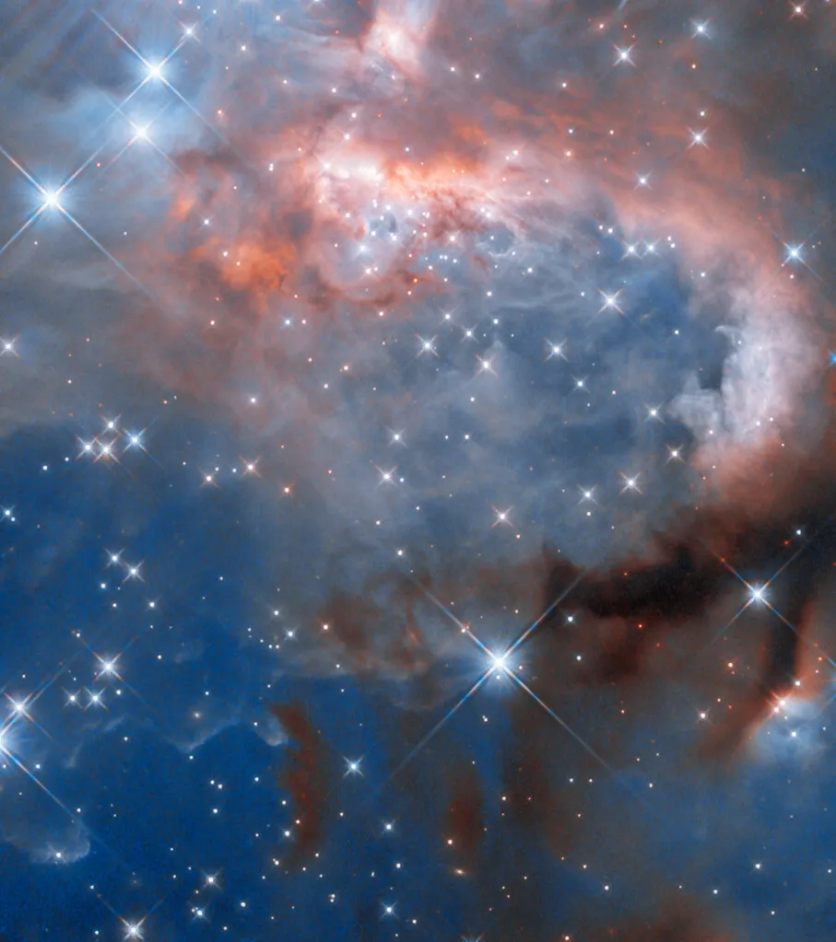An incredible image captured by the NASA/ESA Hubble Space Telescope has unveiled the intricate transformation process of a nebula under the influence of infant stars.
According to NASA, this nebula, named RCW 7, is located approximately 5,300 light years away from Earth in the constellation Puppis. It serves as a ground for the formation of young, developing stars called protostars.

NASA Hubble Space Telescope Captures Baby Stars Transforming a Nebula
Nebulas are massive clouds of dust and gas in space abundant in raw materials needed for new star formation.Within these molecular clouds, gravitational forces cause dense regions to collapse, giving rise to protostars.
These baby stars are surrounded by swirling disks of leftover gas and dust, remnants of their formation process. NASA noted that the protostars within RCW 7 emitted strongly ionizing radiation and powerful stellar winds that transformed the nebula into an H II region.
Such regions are characterized by an abundance of ionized hydrogen-H II, a state in which hydrogen atoms have lost their electrons due to ultraviolet radiation from nearby stars. This process imbues the nebula with a soft, pinkish hue as the excited hydrogen emits light.
NASA's Hubble Space Telescope utilized its Wide Field Camera 3 to study a prominent protostellar binary named IRAS 07299-1651, located in the upper part of the RCW 7.
By observing near-infrared wavelengths, Hubble could penetrate the dense veils of gas and dust, revealing the glowing cocoon surrounding these massive protostars. Although these stars shine brightest in ultraviolet light, their emission in infrared wavelengths allows astronomers to study them more effectively amid the nebula's complex structures.
In the image, several prominent stars appear larger than life, but they are actually foreground stars situated between RCW 7 and our solar system, not intrinsic to the nebula itself. The formation of an H II region is a pivotal stage in the lifecycle of a molecular cloud such as RCW 7.
For several million years, radiation and winds from massive stars will eventually disperse the nebula's gas, paving the way for the eventual incorporation of its remaining materials into new stars or dispersal throughout the galaxy as new molecular clouds.
NASA Unveils 3D Visualization of the Pillars of Creation
NASA has also recently unveiled a new 3D visualization of the majestic and iconic Pillars of Creation, using data from the Hubble and James Webb Space telescopes.
NASA said the visualization allows viewers to experience the three-dimensional structure of the pillars and observe the differences between Hubble's visible-light view and Webb's infrared-light view.
NASA further noted that this is the most detailed multi-wavelength video of the four Pillars of Creation, primarily composed of cool molecular hydrogen and dust. Read more about this story here.
Related Article : NASA's Hubble Space Telescope Captures 'Butterfly Nebula' In Stunning Motion | Fun Facts About This Beautiful Space Butterfly





